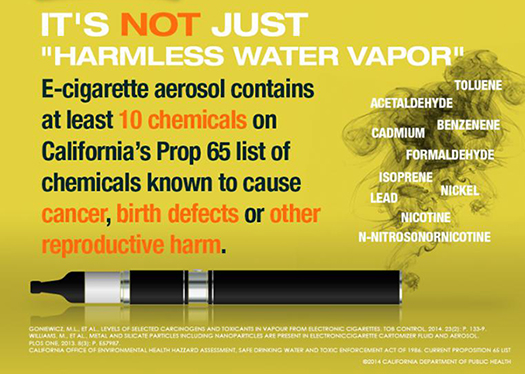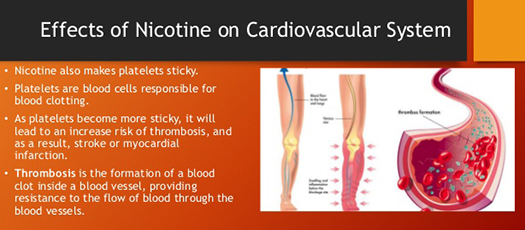News and Events
E-Cigarettes: Lies, Myths, and the Research (Part 1)
By Tracy DeCubellis
March 21, 2018
When e-cigarettes came on the scene a few years ago, it was like the Wild West where few regulations existed and companies could make just about any claim they wanted about the products. Manufacturers essentially mislead the public by declaring them to be safe, non-toxic, and a tobacco cessation device.
It is ironic that early e-cigarettes were promoted as superior way to quit tobacco by the manufacturers, because e-cigarette companies went to Federal court and claimed that they were tobacco products, and not cessation devices. In a later Federal court case, Sottera v U.S. FDA, a judge ruled that e-cigarette products are tobacco and are subject to FDA rules on tobacco. The FDA now has jurisdiction over regulating e-cigarette products. (For more information on FDA regulation of e-cigarettes click here.)
So, let’s address some of the “lies and myths” surrounding e-cigarettes by seeing what researchers have learned.
I heard e-cigarettes are safe, “water vapor”.
The first thing we need to look at is the research showing what is in e-cigarette vapor. Is this just “water vapor” as so many commercials claimed just a few years ago? Based on research, certainly not. In fact, some chemicals found in exhaled e-cigarette vapor include, particulate matter, volatile organic compounds (VOC), polycyclic aromatic compounds (PAC), carbonyls, metals, and nicotine (Schober, et al., 2013). Researchers have also discovered that up to 15 times the amount of formaldehyde is formed as a result of a chemical reaction when e-juice is “vaped” in a higher voltage e-cigarette device compared to regular cigarette smoking (Jenson, et al., 2015). These are the types of e-devices that enable the user to make modifications, and are often used to make large clouds of vapor.

Particulate matter, VOC, PAC, metals and carbonyls (from air pollution studies) have all been shown to be possible cancer-causing agents. Formaldehyde is listed by the United States Department of Health and Human Services as a human carcinogen, is also known to have direction action on gene expression and DNA, and at concentrations of ≤ 0.1 ppm can cause skin and eye irritation or tissue irritation and damage (U.S. Health & Human Services, 2010).
Nicotine is the addictive substance in tobacco. But even being exposed to it via secondhand smoke can have negative impacts on heart health. When vapor expelled during e-cigarette use was examined, nicotine was found to be emitted into the room (Schober, et al., 2013). According to Dr. Barry Hummel, nicotine alone can increase the risk of heart attacks and strokes. “Studies done at Brown University go to the heart of the matter - nicotine’s effect on cardiac tissue,” said Dr. Hummel. “Experts know that smoking cigarettes increases your risk for heart disease and that nicotine is the likely culprit. Vascular tissue exposed to nicotine shows damage. Data from a recent study at Brown University suggests that long-term consumption of nicotine by e-cigarette smoking is likely to increase the risk of developing atherosclerosis by stimulating invasion of vascular smooth muscle cells.”

One popular myth about e-cigarettes is: “Someone using an e-cigarette does not affect anyone else but themselves.” We know this is a myth for several reasons.
Let’s look at how unrestricted use of e-cigarettes in Gilchrist County may be impacting youth initiation of e-cigarette use. Until the Florida Legislature passed an age restriction in 2014, people of any age could purchase e-cigarettes. There is currently no restriction on where people can use e-cigarettes in the county, as there is in Dixie County, which restricts e-cigarette use in any place covered by the Florida Clean Indoor Air Act. Without rules on where and when e-cigarettes can be used, it may mean youth are exposed to secondhand “vape” more often, and it sends a message to them that e-cigarette products are socially acceptable. According to the 2016 Florida Youth Survey, 40.1% of Gilchrist high school students say they are regularly exposed to secondhand vapor (Florida Department of Health, 2016). A similar number of Gilchrist high school students, 40.3%, have tried using e-cigarettes, and more than a quarter regularly use e-cigarettes (Florida Department of Health, 2016). When people use e-cigarettes anywhere they want without the restrictions we put on things like cigarettes or alcoholic drinks, that is a form of social influence on young people.
Now that research has demonstrated that e-cigarette vapor contains harmful chemicals, and even nicotine when users exhale into the air, we have good reasons to be concerned about being around secondhand e-cigarette vapor. People deserve to control what they put into their body, and breathing someone else’s secondhand vapor takes that choice away. The whole argument that someone using an e-cigarette only impacts the user is false for that reason alone. It also assumes that vapor is a harmless water mist, which research has shown to be untrue. This discussion is really about whether one person has the right to blow chemicals into the air where other people are exposed to it.

Researchers who studied e-cigarette emissions said: “Our data confirm that e-cigarettes are not emission-free and their pollutants could be of health concern for users and secondhand smokers” (Schober, et al., 2013). We don’t want to make the same mistake with e-cigarettes that was made with cigarettes. They were allowed to be used in all public environments. Then we found out how harmful they really were, and how dangerous secondhand smoke is to non-smokers. Let’s not be the tobacco companies’ guinea pigs again with e-cigarettes.
____________________________________________________________________
References:
- Florida Department of Health. (2016). Florida youth tobacco survey: Gilchrist (Unpublished data request).
- Jensen, R.P., Luo, W., Pankow, J.F., Strongin, R.F., Peyton, D.H. (2015). Hidden formaldehyde in e-cigarette aerosols. New England Journal of Medicine, 372(4), 392-393.
- Schober, W., Szendrei, K., Matzen, W., Osiander-Fuchs, H., et al. (2013). Use of electronic cigarettes (e-cigarettes) impairs indoor air quality and increases FeNO levels of e-cigarette consumers. International Journal of Hygiene and Environmental Health, 217(2014), 628-637.
- U.S. Department of Health and Human Services. (2010). Report on carcinogens found in formaldehyde. Retrieved from: https://ntp.niehs.nih.gov/ntp/roc/twelfth/2009/november/formaldehyde_bd_final.pdf




